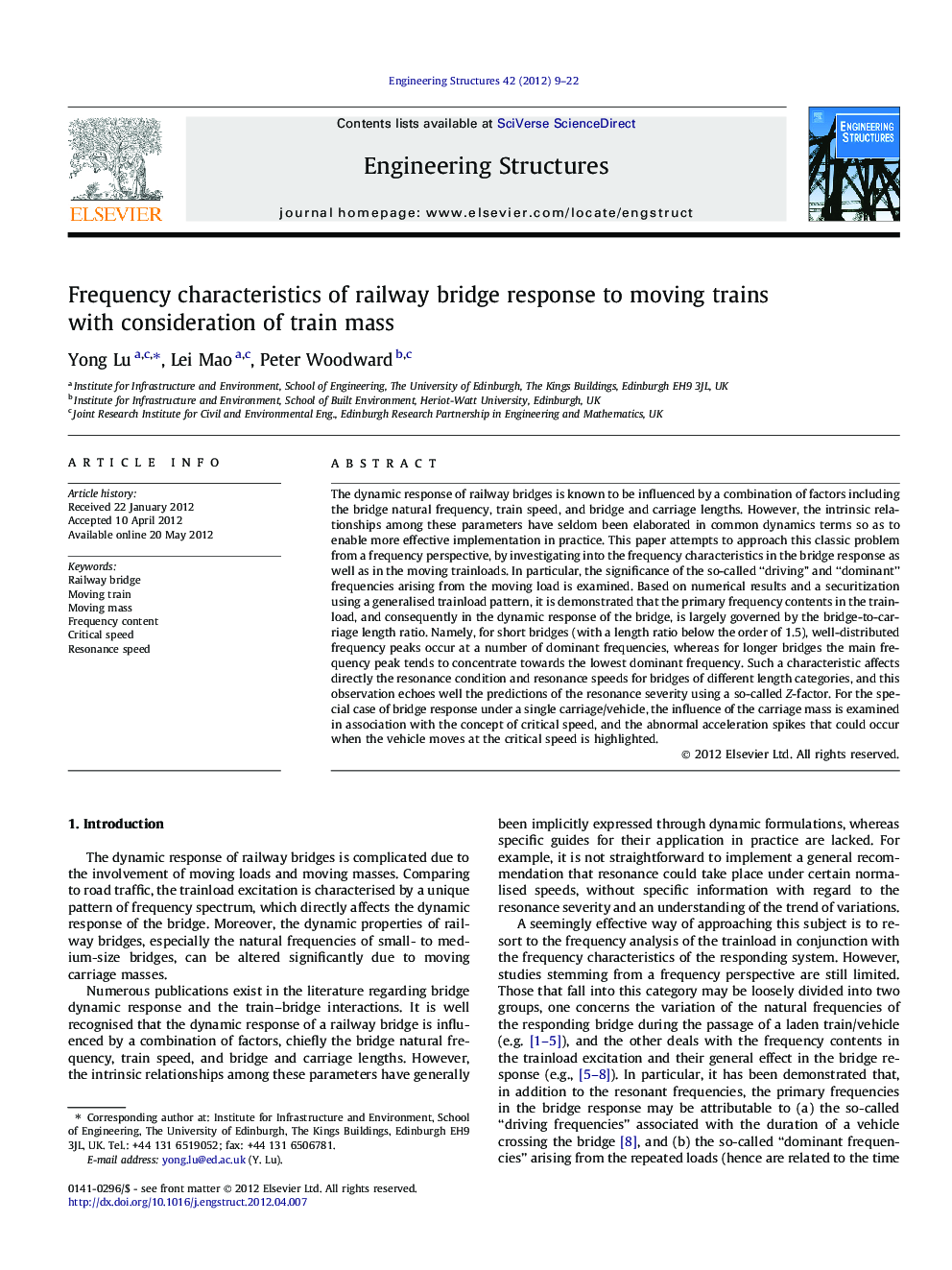| Article ID | Journal | Published Year | Pages | File Type |
|---|---|---|---|---|
| 267439 | Engineering Structures | 2012 | 14 Pages |
The dynamic response of railway bridges is known to be influenced by a combination of factors including the bridge natural frequency, train speed, and bridge and carriage lengths. However, the intrinsic relationships among these parameters have seldom been elaborated in common dynamics terms so as to enable more effective implementation in practice. This paper attempts to approach this classic problem from a frequency perspective, by investigating into the frequency characteristics in the bridge response as well as in the moving trainloads. In particular, the significance of the so-called “driving” and “dominant” frequencies arising from the moving load is examined. Based on numerical results and a securitization using a generalised trainload pattern, it is demonstrated that the primary frequency contents in the trainload, and consequently in the dynamic response of the bridge, is largely governed by the bridge-to-carriage length ratio. Namely, for short bridges (with a length ratio below the order of 1.5), well-distributed frequency peaks occur at a number of dominant frequencies, whereas for longer bridges the main frequency peak tends to concentrate towards the lowest dominant frequency. Such a characteristic affects directly the resonance condition and resonance speeds for bridges of different length categories, and this observation echoes well the predictions of the resonance severity using a so-called Z-factor. For the special case of bridge response under a single carriage/vehicle, the influence of the carriage mass is examined in association with the concept of critical speed, and the abnormal acceleration spikes that could occur when the vehicle moves at the critical speed is highlighted.
► Systematic characterisation of frequencies and spectra of trainload and bridge response. ► Resonances examined with frequency analysis and in quantification for practical application. ► Effect of moving mass incorporated in the evaluation of critical and resonant speeds.
